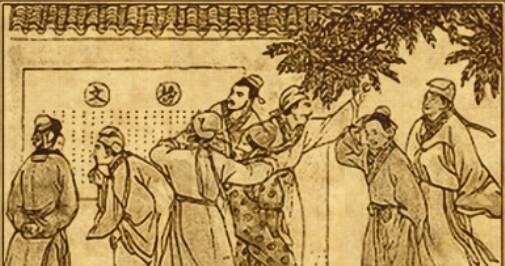In ancient times, participating in the imperial examination was an important way for ordinary people to enter the career path. The imperial examination system was further developed and perfected during the Tang Dynasty and became the main way for the imperial court to select officials. With a unified imperial examination, it is natural to have a ranking of rankings. In some film and television dramas, when there is a scene of someone in high school, this person often rides a horse and wears a big red flower, which makes the surrounding onlookers envious when marching. Especially for those who are in high school, their honors are even more different. In ancient times, the people took the special titles of Yuanyuan, Bangyan and Tanhua respectively for the top three people in the imperial examination. It seems that whenever there is a imperial examination, these synonyms appear, so how do these titles appear?

The title of Champion had already appeared as early as the Tang Dynasty, and after the end of the imperial examination, the chief examiner would submit the files of qualified candidates to Menxia Province, write a form and then submit it to the emperor for review. The first place in the shape is also called "shape head", because this title is unsightly, so it is changed to a shape. The first place is naturally quite different from the candidates of other rankings, and it is understandable to have a unique title. But the second place is not so special, and there is no unique title in the Tang Dynasty. In the Northern Song Dynasty, the imperial examination was valued by the imperial court, and the examination system was more perfect, so the title of the list eye was used to refer to the second and third places.
From this title, it can be seen that it is named out of the position of the second and third places on the list, the first place is at the top, and the second and third places are around the "champion", so it is called "the eye of the list". As for Tanhua, at first it was not used to refer to the person who was the first in the imperial examination. The word "Tanhua" already appeared in the Tang Dynasty, when it was used to jokingly call "Tanhua Messenger". When the new branch of the jinshi is listed, it is the time when the apricot blossoms are in full bloom in the spring, and the people of the middle school will hold a garden tour in order to celebrate the middle school, and two jinshi will be selected to be responsible for picking flowers to welcome the winner. Later, this title was used to refer to the third place in the imperial examination.
These special titles about the top three are mainly folk names, and the official does not call the top three by such names when the list is released. But in any case, such a title can show the difference between the top few of the imperial examination. For ordinary people, it is not an easy task to take the imperial examination, let alone the top three in high school. From another point of view, the emergence of these titles has also made the imperial examination more different. Before the emergence of the selection of officials, a small number of people enjoyed privileges, and ordinary people could not get involved in it, so there was no title to circulate.
The emergence of the imperial examination system has broken this monopoly of the scholar clan, more ordinary people have the opportunity to enter the career path, and the top three are specifically referred to with specific titles, which can stimulate the fighting spirit of those who participate in the imperial examination to a certain extent, and also let more people maintain great attention to the imperial examination.
Perhaps such a title also shows the ability of the person who has earned such a title. Those who enter the top three, while receiving the title of official and knight, also have a special title, which makes them look different among the officials, as if they have an extra layer of special glory. However, there were so many titles selected by the ancient imperial examinations, and there were only a few champions who were really capable. Many of them are only temporarily famous, and few are known to future generations.